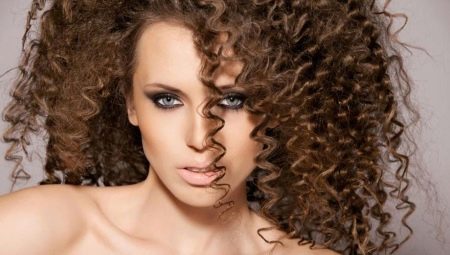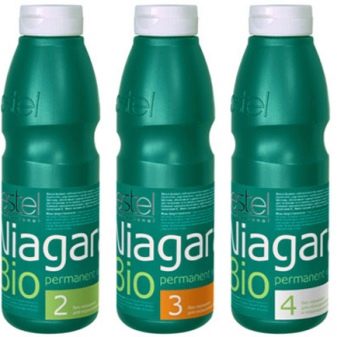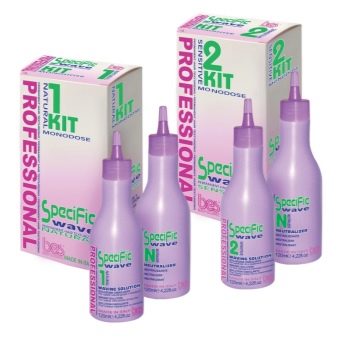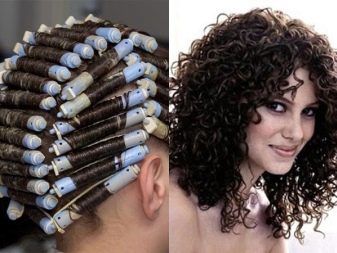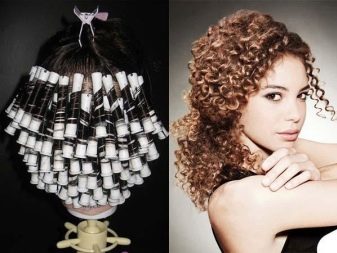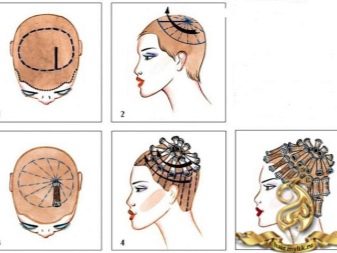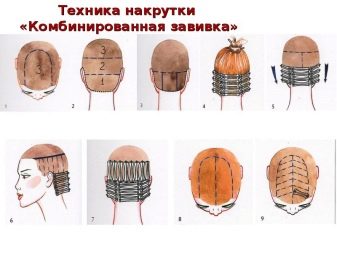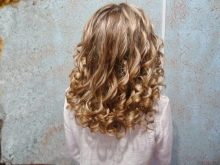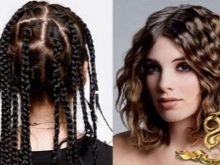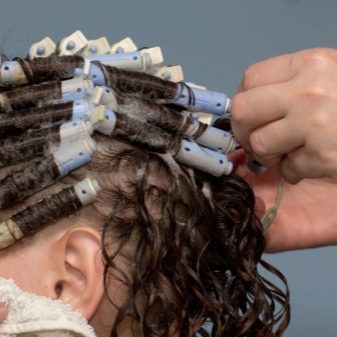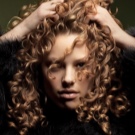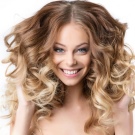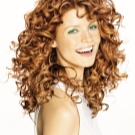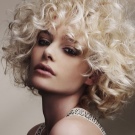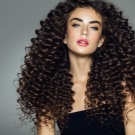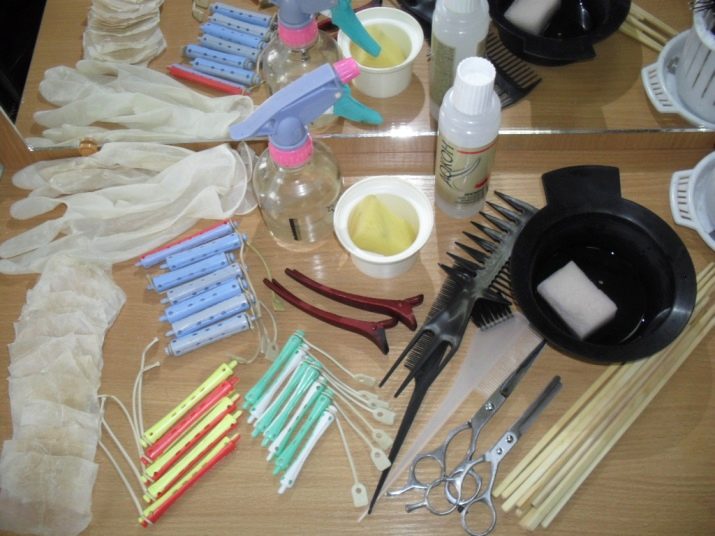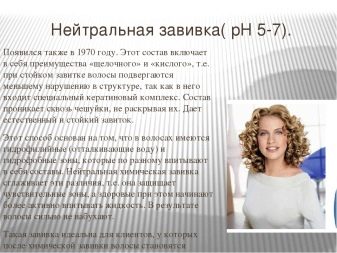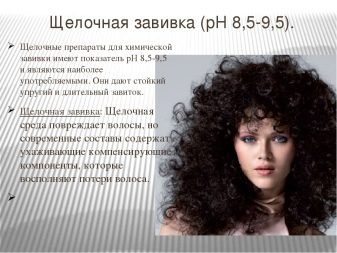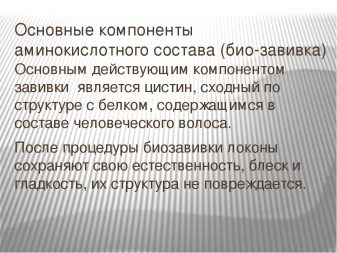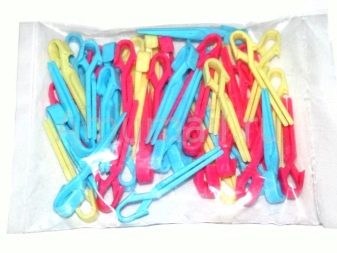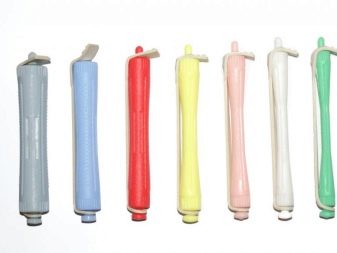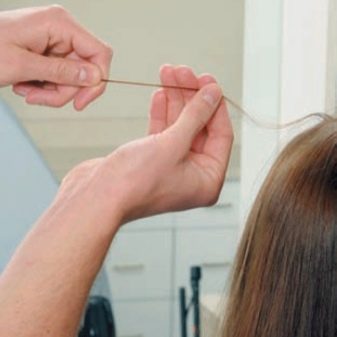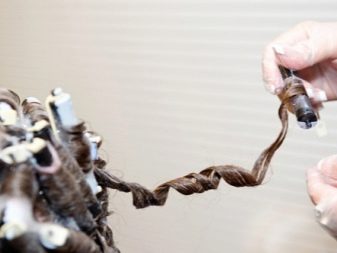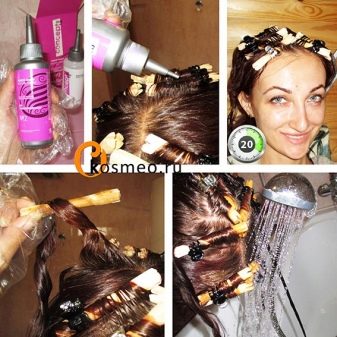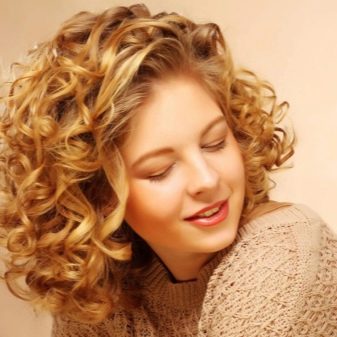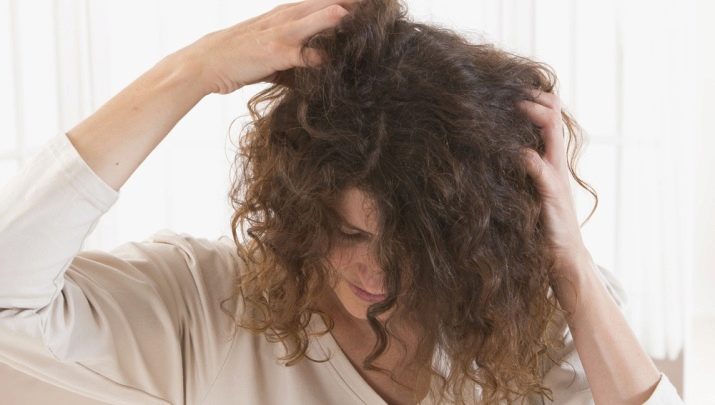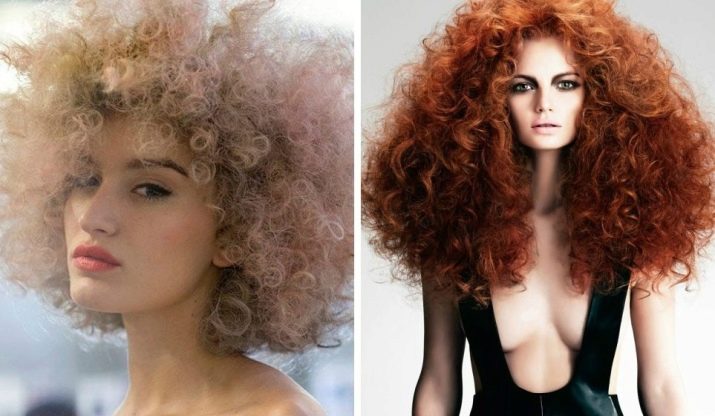At all times curly curls were considered a real pride and decoration of a woman. Unfortunately, not all the representatives of the fair sex nature has endowed with elastic curls - but this is not a reason to despair. Nowadays, nothing is impossible - to become the owner of luxurious curly hair simply and quickly even at home.
Rules of the procedure
Probably, every woman is able to quickly curl her hair with a curling, but when it comes to a more radical change in her hairstyle, the ladies try to contact professional masters in beauty salons - women of fashion are afraid to burn the strands with compositions for chemical perm.
Their fear is not unfounded, in fact, the very first compositions were far from safe, and during the work they had to take into account so many subtleties that even hairdressers sometimes made mistakes. As a result, the hair, at best, dried out and split, but often it simply fell out, and only an uneven “hedgehog” remained on the head.
However, technology does not stand still, and today the cosmetic industry offers gentle formulations that have minimal impact on the hair shaft, so it is safe to use them even at home.
Long-term styling is done with the use of bobbins and fixing mixtures, while depending on the type of location of the curlers there are several options for curling.
- Horizontal - such options are used by owners of curls of any length. This technology is extremely easy to learn and use in the domestic environment.
- Vertical - this method is applied only on elongated strands. A separate kind of such a perm is considered to be a technique in which the curls are first twisted in a tight rope, and then wound around curlers.
- In a circle - this option is good for owners of a long-haired head of hair, trimmed with a cascade or graduation. In this case, the hair becomes volume and has a natural look.
- Combined - here vertical and horizontal curls are combined with each other.
During the curling of hair at home should be borne in mind a few features.
- If you wish, you can not curl all the pile, and only the tips or root area. The first option is good for women with pointed triangular face shapes, as well as for girls with rather short strands. Laying near the head is carried out to give pomp.
- To achieve the most natural effect, you can use the curl on the braid. In this version, the strands are first braided into a classic braid for 2/3 of the length, and the tips are twisted onto a bobbin.
- The curls of different sizes look quite stylish - this is possible using the “train” method, when each strand is wound on papillots of different diameters.
Chemistry at home can be done in two ways:
- in the first case, a fixing compound is first applied to the hair, and then wound;
- in the second, on the contrary, first curls are twisted, and after that they are processed with means for curling.
At home, it is better to stop at the second option, because in the first case, without having enough experience in winding up, you can hesitate and not have time to quickly twist the strands, which can significantly harm the hair.
Let us dwell in more detail on what happens to the hair at the moment of curling. Everyone knows that in order to twist straight hair, you need to change the shape of their cross-section and at the same time additionally wind it along the axis. When the locks are wrapped around the bobbin, the curls curl and change the natural shape. At this moment, the protein bonds of the structural composition are slightly shifted, but they are not torn either, because the curls remain only until the first moisturizing of the hair.
When exposed to strong chemical compounds, the mechanism of action is different. Hair scales in the normal state are closed, but due to the influence of a chemical drug, they break up inside the hair shaft and open up, which leads to damage to protein bonds. At this point, the hair can be given almost any shape. After that, it must be fixed. Immediately after this, the hairs begin to regain their structure, the keratin gradually returns its strength and elasticity, and the scales again close. Thus, when curling is carried out, the curls simultaneously act both physically and chemically, and the curls themselves experience a rather powerful tension force and internal pressure.
The effectiveness of curl formation and the rate of curl curl affects the concentration of the current composition, as well as the time of its exposure. And of course, the structure of the hair.
Tools and materials
For the work will require a set of the following tools:
- bobbins or hair rollers of several diameters - in quantities from 20 to 70 pieces, keep in mind that they must be wooden, the use of plastic and metal papillotok is unacceptable;
- a comb with a narrow separator or a non-metallic needle;
- foam sponge for applying fixative preparation;
- sponge for a more even distribution of fixatives;
- latex or rubber gloves;
- measuring capacity;
- Bowls for breeding compositions - they must be either glass or porcelain;
- cape to protect shoulders and clothing;
- towels.
In addition, you will need the product itself for curling, fixative and balm-conditioner.
For chemical perm use of several types.
- Acid - the most persistent, providing the most lasting effect and fixing the highest degree. The composition can be used on thick and thin hair, but at the same time it damages the curls pretty much, so after the procedure, a course of restorative care procedures is necessary.
- Alkaline is a much softer method of curling, which lasts a fairly long time. However, this option is not suitable for all hair types.
- Neutral - this is the most gentle technique that creates wavy curls along the entire length of the hair, regardless of the type and condition of the hair, although even such compositions have a damaging effect on the hair.
- Amino acid - suitable for thin and weakened curls, during the manipulation of curls, not only curls, but also feed on all sorts of amino acids and proteins.
At home, it is better to stay at one of the latest options.
How to make at home?
If you want to make a perm on your shovel yourself at home, you must take into account the risk of spoiling or burning curls. Sometimes the use of rather aggressive preparations is hidden behind the very elementary technique, therefore, it is not necessary to buy oneself for the ease of the process when curling. Sometimes a longer process in fact turns out to be the least traumatic strand. First you need to learn all the subtleties of home curling, and only then proceed to action.
Long-term perm in the home can be done at any time, with the exception of pregnancy, breastfeeding and during menstruation, and do not need to resort to it at the time of chemo and hormone therapy. Keep in mind that the head should not be washed and smeared with air conditioners later than a day before the procedure, in this case, the balm will not allow the drugs to properly affect the strands and the final effect will be the most unpredictable.
Homes are most often made by medium and large curls; for this purpose, medium and large diameter bobbins will be needed - from 1 to 10 cm in the section, while for longer strands, the use of several types of curlers is permissible. After all the preparatory work is completed, you can proceed to the most perm.
Step-by-step instruction perm includes a number of basic steps.
Start
To begin, conduct a test of the drug on the skin and curls. Take a strand on the back of your head and spread it on the diluted composition. If after a couple of minutes the hair turned gray, like ash, became brittle on stretching, and the skin turned red or swollen - then the composition does not suit you.
Hair preparation
Before carrying out a chemical perming, the hair is moistened, avoiding massaging the skin, after which the mound is visually divided into two temporal, occipital and crown regions, each divided into several strands and wound parallel to the direction of hair growth. To protect the tips from aggressive components, it makes sense to wrap them with paper, and only then twist them on the bobbin.
Protection
Along the site of the beginning of the growth of the hair, the skin should be smeared with a very oily baby cream or petroleum jelly, after which a tissue tourniquet should be placed on it. Put a towel over your shoulders and wear gloves on your hands.
Composition
The composition is diluted in the required concentration and spread on curlers with a sponge or a special applicator. Work should be extremely careful to prevent the formation of splashes. Usually, treatment begins from the occipital part, moving to the forehead, and then pass through the temporal areas.
If you use acid-based products, then you should additionally wear a large warming cap, in all other cases, a sufficiently thin shower cap.
The drug is kept on bobbins for at least a quarter of an hour.
Check
After 15 minutes, one bobbin is unwound in each zone, if the curl straightens under the weight of its own weight, you should hold the solution on the hair a little more, but do not exceed the time specified in the attached instructions.
Fixing
The resulting curls should certainly be fixed. Fixer solution is diluted in another container, after which, without removing the papillotok, the head is thoroughly washed from the main active solution. After that, using half of the fixing composition, process all twisted strands, incubate for about 10 minutes, unwind and apply the second part of the fixture, incubate for another 5 minutes and wash off finally.
After washing, the hair should be treated with air conditioning and dried naturally without using a hair dryer and dryer.
How to care?
A perm is rather dry on curls, so special masks and serums will be needed to take care of them, but they can be used no earlier than after the fourth shampooing. It is better to apply professional products designed for damaged hair.
It is better to dry the hair in a natural way, or set the hair dryer on a cold air supply mode.
Chemistry has another side effect - split ends. Therefore, a week after curling, it is better to cut off the ends of the hair, and in the daily care procedure include special sprays for damaged and brittle strands.
You can dye your hair no sooner than two weeks after curling, because up to this point the paint will be fixed very badly.
After curling, it is better to wear loose hair, since rubber bands, crabs and other clips can loosen curl.
Errors
Keep in mind that with insufficient experience with a perm, there is a risk of making mistakes. Consider the most common.
Scalp irritation
This happens when an excessively large amount of the compound is applied, which, when drained, begins to cause an undesirable reaction.
Inexpressive curls
Here the reasons can be very diverse:
- low concentration of the active solution;
- defective or expired product;
- little solution applied;
- the size of the bobbin was not correct;
- hair was divided into too thick strands.
Hair fragility
Such a nuisance occurs if the drug is kept on the head for too long, or use too concentrated formulations. And also the fragility may be due to insufficient fixation time.
Hair color change
When chemical perm is considered normal clarification of 1-1.5 tons. If the contrast is more pronounced, then most likely the wrong exposure time was used, or metal products that reacted with oxidizing agents were used in the work.
On how to do a perm hair at home, see the following video.
